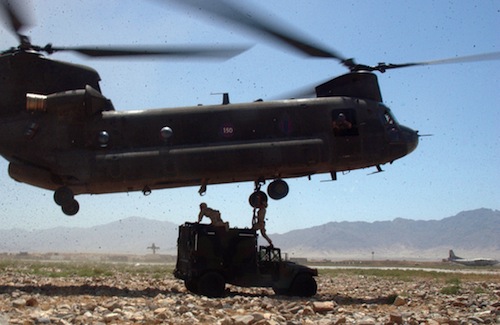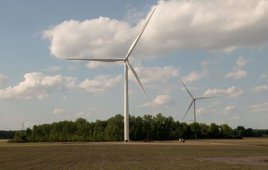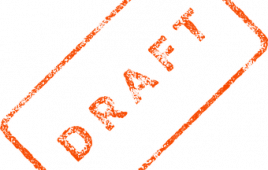What do the areospace and wind industries have in common? They both depend on high-performance steel. Illinois-based QuesTek Innovations LLC (www.questek.com) has developed two types of gear steels that are already commercially available and in use in aerospace applications, but are suitable for wind-turbine gearboxes as well.
Ferrium C61 and C64 are high-performance, double-vacuum-melted steels made in the U.S. by Latrobe Specialty Steel Company of Latrobe, PA (www.latrobesteel.com). The steels offer significant increases in strength, toughness, and fatigue resistance versus conventional AISI 8620 or 9310 gear steels. High hardenability of C61 and C64 allow reaching good material properties in the core of large, thick-sectioned components, while reducing geometric distortion during carburization. QuesTek says the steels could be valuable to the wind industry as an option to upgrade existing parts with improved materials to increase reliability, or used in new turbine designs.
Ferrium 61 can achieve surface hardnesses up to 60 to 62 Rockwell C. This is comparable to conventional gear steels, but C61 is much tougher and stronger, having an ultimate tensile strength of 240 ksi and fracture toughness of 130 ksi√in (in typical properties). This may make it appropriate for highly-loaded gearbox parts such as flexible planet pins, integral driveshafts, and pinions. In the aerospace industry, QuesTek is working with Boeing and the U.S. Army to apply C61 steel to the CH-47 Chinook helicopter to reduce the weight of the forward (geared) rotorshaft by 15 to 25%. This is possible because the C61’s axial fatigue strength and static mechanical properties are more than 30% greater than those of the incumbent alloy 9310 (in typical properties), and it has much higher bending fatigue resistance. Applications for C61 beyond gearboxes and helicopter rotor shafts include other integral drive shafts, gear assemblies, and power transmission components in high-temperature, high-performance applications, or applications sensitive to weight or space such as racing, off-road, commercial, and military vehicles.

Aircraft gearboxes, such as those on the CH-47 Chinook, must be as durable and light as possible, qualities that could serve wind turbines well. Recent steels, C61 and C64, may allow designing lighter units.
Ferrium 64 can achieve even higher surface hardnesses (up to 62 to 64 Rockwell C) to provide contact-fatigue resistance comparable to current bearing materials, while also providing excellent bending-fatigue resistance suitable for integral gears. QuesTek suggests considering C64 for future novel turbine ring-gear designs that contain integral bearing raceway surfaces to reduce overall drivetrain assembly inertia, size, and part count.
The company has been awarded a subcontract from Bell Helicopter to jointly evaluate the application of the steel for helicopter gears. This subcontract is part of the $30 million Technology Investment Agreement awarded to Bell by the U.S. Army Aviation Applied Technology Directorate to develop drive-system technology under the Army’s Future Advanced Rotorcraft Drive System program. This program targets a 55% improvement in power-to-weight ratio, a 35% reduction in production, operating, and support costs, and other improvements in drive systems for the U.S. Army’s current and future rotorcrafts. The application of C64 can help reach this goal because its ultimate tensile strength is about 35% greater than that of the current alloy Pyrowear 53 (also referred to as X53).
Both C61 and C64 use modern vacuum carburizing and combine the carburization and austenization steps to simplify total thermal processing and manufacturing operations. Their high hardenability also permits a mild gas quench, thus reducing part distortion and allowing less grind stock and subsequent machining. Both steels resist grinding-burn damage and can tolderate much higher operating temperatures (e.g. during normal operation or in an emergency “oil-out” situation) because their tempering temperatures are much hotter than conventional gear steels.
The combination of increased strength, toughness, hardinability, high-temperature resistance and surface hardness of Questek’s steels can improve aerospace gearbox life and power-to-weight ratio, uses the wind industry could also greatly benefit from.
WPE
Filed Under: Uncategorized




